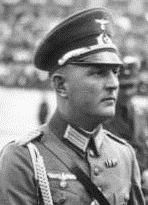raharris1973
Well-known member
In the Hossbach Memorandum of meeting with his advisors in November 1937, Hitler announced that it was imperative to act at some time within the next five or six years before "two hate-inspired antagonists", Britain and France, closed the gap in the arms race in which, Hitler noted, Germany was already falling behind.
The timing appears quite strange for *this* to be the moment for Hitler to revise his view of Britain from a potential ally in Mein Kampf (1925) and his Second Book (1928) to a "hate-filled antagonist".
This came after the French non-reaction to the Rhineland reoccupation and Anglo-French non-support of the Spanish Republic and support of the Non-Intervention Committee and Non-Intervention Agreement. It came a couple years after the Anglo-German Naval Agreement of 1935.
In the case of considering France hostile I guess I get it because it was Popular Front government with a Jewish Deputy Prime Minister that had land Germany wanted and that did let some international volunteers travel on to Spain, and did maintain some encircling alliances. OK - hostile, even if not vigorously so.
But Britain? Firmly under Conservative hegemony, just elected Chamberlain with Appeasement in full flower and much of the Conservative party rooting for Franco.
So where's the hostility? Was it the dashing of 'unrealistic expectations'? Although a successful gambler years Hitler did have many unrealistic expectations to put it mildly. Perhaps his pro-British statements in his earlier works were based on Anglo-French disputes over the Ruhr occupation, and to be considered non-hostile to Germany, Britain would have had to go beyond the Anglo-German Agreement to silencing its Hitler critical left-wing and clearly demonstrated it was coordinating its policies at least as much with Berlin, if not Paris, if not moving to outright alliance.
The timing appears quite strange for *this* to be the moment for Hitler to revise his view of Britain from a potential ally in Mein Kampf (1925) and his Second Book (1928) to a "hate-filled antagonist".
This came after the French non-reaction to the Rhineland reoccupation and Anglo-French non-support of the Spanish Republic and support of the Non-Intervention Committee and Non-Intervention Agreement. It came a couple years after the Anglo-German Naval Agreement of 1935.
In the case of considering France hostile I guess I get it because it was Popular Front government with a Jewish Deputy Prime Minister that had land Germany wanted and that did let some international volunteers travel on to Spain, and did maintain some encircling alliances. OK - hostile, even if not vigorously so.
But Britain? Firmly under Conservative hegemony, just elected Chamberlain with Appeasement in full flower and much of the Conservative party rooting for Franco.
So where's the hostility? Was it the dashing of 'unrealistic expectations'? Although a successful gambler years Hitler did have many unrealistic expectations to put it mildly. Perhaps his pro-British statements in his earlier works were based on Anglo-French disputes over the Ruhr occupation, and to be considered non-hostile to Germany, Britain would have had to go beyond the Anglo-German Agreement to silencing its Hitler critical left-wing and clearly demonstrated it was coordinating its policies at least as much with Berlin, if not Paris, if not moving to outright alliance.


